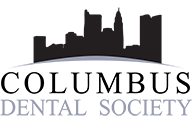Understanding TMJ and TMD
Before looking into treatment options, it’s important to know the difference between TMJ and TMD. Many people use these terms as if they are the same, but they actually refer to different things. Understanding this difference helps you find the right care and plans to manage your situation.
Defining TMJ and TMD
TMJ is short for the temporomandibular joint. You have two of these joints, one on each side of your jaw, just in front of your ears. They work like sliding hinges. They connect your jawbone to your skull. This allows you to open and close your mouth for talking, chewing, and yawning.
TMD means temporomandibular joint disorders. There are several conditions that affect the TMJ, the muscles around it, and the ligaments that support it. TMD can lead to different symptoms. These symptoms can range from mild discomfort to severe pain and dysfunction.
Common Symptoms of TMJ Disorders
Recognizing the signs of TMD is important for finding help early. The main sign you might notice is facial pain. This pain can feel like a dull ache or a sudden sharp pain. Pain in the jaw joint is also common. You may feel it when chewing or opening your mouth widely.
TMD symptoms go beyond just facial pain. Some people get headaches or earaches. They might also feel pain going down their neck and shoulders. Problems with jaw movement, like clicking, popping, or locking the jaw, are other signs of TMD.
The Causes Behind TMJ Disorders
TMJ disorders have many causes. They usually come from a mix of different factors. It is important to know these factors to prevent and treat the issues well. Sometimes, a particular injury or problem can be found as the reason. However, most of the time, it is a combination of several things that cause TMD.
Physical Stress Factors
Physical stress on the jaw joint and its muscles often causes TMJ disorders. Habits like teeth grinding (bruxism) and clenching can happen without you noticing. This usually happens during sleep or when you are stressed. These habits put too much pressure on the jaw muscles, which can cause pain and problems.
Also, if the teeth or jaw are not lined up well if there is an injury to the jaw, or if you have poor posture, this can add to the stress on the TMJ. This stress can lead to muscle tension, inflammation, and damage to the joint. These issues might result in TMD symptoms.
Psychological Stress as a Contributor
Psychological stress clearly affects physical health, and TMJ disorders are included in this. Ongoing stress can lead to various physical reactions, such as muscle tightness in the jaw, neck, and shoulders.
If stress continues for a long time, it can make TMJ problems worse or even cause them to happen. This link shows why managing stress is key in TMJ treatment. It helps stop the ongoing cycle of stress, muscle tightness, and pain.
Diagnosing TMJ Disorders
If you think you have a TMJ disorder, you should talk to a healthcare professional for a correct diagnosis to determine how complex your condition is and what is causing it.
When to Consult an Orthodontic Specialist in Gahanna, Ohio
Residents of Gahanna, Ohio, who have ongoing jaw pain, headaches, or other signs of a TMJ disorder should talk to a specialist. These experts know how to find out what is causing your discomfort and can suggest the best treatment options. They will take a complete medical history and do a careful physical check. They might also recommend tests such as X-rays or MRIs to look at the joint and the areas around it.
What to Expect During Your Visit
During your visit, the specialist will ask about your symptoms. This includes how often they happen, how long they last, and if anything triggers them. Next, they will do a clinical exam. They will check how well your jaw can move, look for tenderness in the jaw muscles, and listen for clicking or popping sounds when you move your jaw.
Patient education is very important during the consultation. Your specialist will explain TMJ disorders and talk about what might be causing your symptoms. They will also provide a treatment plan just for you. This plan may involve different specialists to help with both the physical and emotional parts of TMD.
Non-Invasive Treatment Options
TMJ disorders can often be handled well with non-invasive treatments. These treatments aim to lower pain, help jaw movement, and tackle the main causes of the issue. They are usually the first choice for treatment and are safe and effective for many people.
Home Remedies and Self-Care Tips
Simple home remedies can help ease mild to moderate TMJ pain and discomfort. You can apply moist heat or cold packs to the area that hurts. This can relax muscles and reduce inflammation. Gentle jaw exercises, guided by your physical therapist or orthodontist, can improve how your jaw moves and make your jaw muscles stronger.
- Jaw Relaxation: Slowly open and close your mouth while keeping your tongue on the roof of your mouth.
- Chin Tucks: Gently push your chin towards your chest and hold the stretch for a few seconds.
- Tongue Up: Put your tongue on the roof of your mouth, behind your front teeth. Lightly press upwards and hold for a few seconds before repeating.
Physical Therapy Techniques
Physical therapy is an important part of treating TMJ. A physical therapist can help you move your jaw normally and feel less pain by using different methods.
For example, they may use manual therapy, which involves gentle stretching and massage to ease muscle tightness and boost flexibility. Ultrasound therapy can also be used to lessen pain and inflammation. Moreover, transcutaneous electrical nerve stimulation, or TENS, can reduce pain by blocking nerve signals. Your physical therapist will work with you to create a customized exercise plan. This plan will include exercises that help improve your jaw movement and strengthen the jaw muscles.
Advanced Therapeutic Techniques for TMJ
If non-invasive methods haven’t worked well enough, you might think about using advanced treatments. These options usually go along with gentler treatments. They focus on lessening pain, enhancing jaw function, and dealing with specific causes of TMD.
Dental Appliances and Splints
Dental devices like occlusal splints or bite guards are often suggested to help with TMJ disorders. These are specially made to fit over your upper or lower teeth. They help to align your bite, lower teeth grinding, and ease pressure on your jaw joints.
You can wear these splints during the day or night, based on how bad your symptoms are and what your consultation. Although dental devices do not directly fix TMD, they can give you good pain relief and protect your teeth from more damage caused by clenching or grinding.
Medication Options for Managing Pain and Inflammation
In some cases, we may suggest medications to help manage pain and swelling related to TMJ disorders. Over-the-counter pain relievers, like ibuprofen or acetaminophen, can help lessen mild to moderate pain.
For more serious cases, we may give you stronger anti-inflammatory drugs or muscle relaxants. It’s important to speak with us before taking any medicine, even over-the-counter ones. Dr. Buchsieb can help you with the right dosages and possible side effects.
Lifestyle Changes and Management
To help manage TMJ disorders and find long-term relief, you can make some lifestyle changes along with professional treatment. These changes can include habits that ease the stress on the jaw joint. They also focus on promoting relaxation and improving your well-being.
Diet Adjustments for TMJ Relief
Modifying your diet can really help manage TMJ symptoms. Eating soft foods that need little chewing can lighten the stress on your jaw joints. It’s important to avoid chewy, crunchy, or hard foods that make your jaw move a lot. This way, you will feel less discomfort when you eat.
Cutting your food into smaller pieces can make chewing easier and cut down the strain on your jaw. Staying well-hydrated is also crucial. It helps keep the jaw muscles and joints well-lubricated and working well.
Stress Management Techniques
The link between stress and TMJ disorders is strong. Adding stress management tips to your daily life is important for lasting relief. You can try relaxation methods like deep breathing, meditation, or yoga. These activities can ease muscle tension and help you feel calm.
Doing things you love, like hobbies or being in nature, can also help lower stress. You might think about talking to a therapist or counselor. They can give you personal strategies to handle stress and improve your quality of life.
Find Lasting Comfort with Expert Treatment
Good TMJ therapy includes many options. These range from simple treatments to more advanced techniques. It’s important to understand what causes TMJ issues, what symptoms to look for, and the different ways to treat them. Each person needs a plan that fits their own needs. Changing your lifestyle, managing stress, and adjusting your diet are also very helpful for TMJ care. Contact Dr. Buchsieb at Smile With Style Orthodintcs in Gahanna, Ohio, who can help you find the right guidance for your TMJ problems. Remember, taking care of yourself and getting professional help is key to managing TMJ well.


